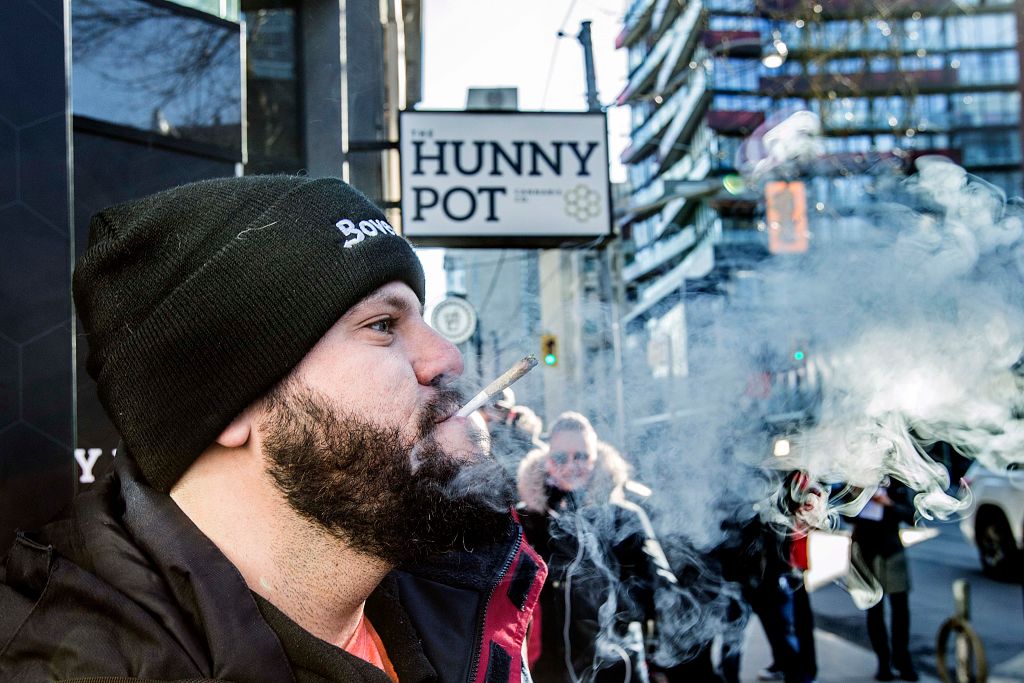On Thursday, Ontario announced that it will relax the system for who is allowed to open a cannabis store, abandoning a contentious lottery-based system and lifting the cap on the number of store licences.

The change will allow Ontario to have whatever number of cannabis stores the market will bear — eventually.
What happens now?
There are three important dates:
- On January 6, 2020, provincial regulators will start accepting applications from people who want to be licenced retailers. This stage is about screening individuals. People with certain cannabis-related convictions, or known connections with organized crime, will be turned down. They will also have to complete training approved by the regulator.
- People who pass this stage can then apply to open a cannabis store at a specific address after March 2, 2020. The store locations may or may not be approved; they have to be at least a certain distance from schools, and there’s a period in which community members can file objections.
- Starting in April, regulators expect to start to issue store licences at the rate of about 20 a month.
CIBC cannabis analyst John Zamparo wasn’t all that impressed.
“While this news is … positive, the magnitude of the announcement is more modest compared to our expectations, and those of many industry participants we have spoken to,” he wrote in a research note Friday.

What does 20 approvals a month mean?
Ontario now has 24 cannabis stores, and will have about 50 by the spring.
Alberta, by contrast, has over 300 cannabis stores, and the province, so far, appears to be able to support them.

Get breaking National news
Proportionate to population, if Ontario had opened stores at the same rate, the province would now have about 1,000.
But at 20 approvals a month starting in April, Ontario won’t get to 1,000 stores before March 2024.
“The 2020 target of 250 is 10x the current footprint, but represents just ~185 new stores beyond what had already been announced,” Zamparo wrote. “For context, the 250 Ontario 2020 target is fewer than our estimate of Alberta’s store count today.
“The importance of a brick and mortar presence cannot be understated in this industry … We believe a lack of a fully developed retail network is the largest factor in restricting industry growth.”
_848x480_1430789699819.jpg?w=1040&quality=70&strip=all)
What about the dry counties?
In January, the province asked local governments to decide whether or not they wanted to allow cannabis sales. The complete list is here.
Many of the suburban communities surrounding Toronto — Mississauga, Oakville, Markham, Vaughan, Pickering — opted out.
But Ontario’s rollout of cannabis stores has been so slow that the issue faded into the background: almost no communities had cannabis stores for all of 2019 whether they’d voted to allow them or not, so it didn’t make all that much difference.
As more stores start to open, however, we should expect new debates in communities that originally chose to ban them.

How do local bans affect farm gate sales?
The province has said that it will allow farm gate sales of cannabis, or sales to the public from growing facilities, with a limit of one sales point per company.
The wrinkle, though, is that a number of licenced producers are in municipalities that chose to ban sales. For example, Agripharm, a licenced producer south of Collingwood, is in a township which doesn’t allow cannabis sales.
Producers in Pelham and Niagara-on-the-Lake are in the same situation.
(Perhaps the most extreme case is Oakville, home to the province’s cannabis distribution warehouse, which doesn’t allow retail cannabis sales.)

How will all this affect the national cannabis economy?
One thing that has become clear as legalization has unfolded is that Canadians who want to buy legal cannabis want to do it in person. So there’s a very tight relationship between the availability of retail stores and legal cannabis sales.
“The inability of the Ontario government to licence retail stores, right off the bat, has resulted in half of the expected market in Canada simply not existing,” Tweed CEO Mark Zekulin complained in November.
Ontario, though it had Canada’s highest cannabis sales in the first year of legalization, had its second-lowest per capita sales, after British Columbia. On average, Ontario residents bought $15 worth of legal cannabis up until September, compared to $45 in Alberta, $68 in Nova Scotia or $97 in P.E.I.
For better or worse, Ontario is home to four Canadians in 10, so an unleashing of the province’s cannabis economy seems likely to have a disproportionate effect on the national cannabis economy.


Comments